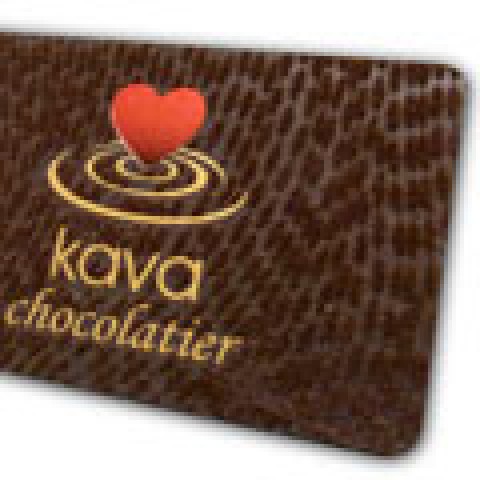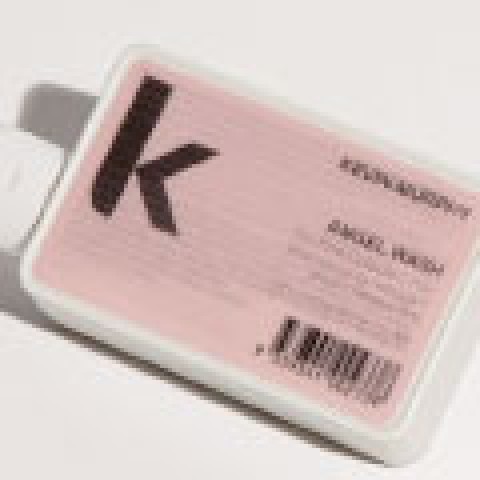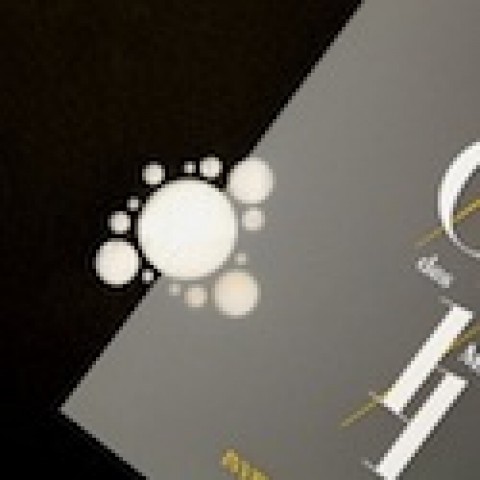 “Excellent presentation! Probably one of the best webinars so far. The speaker was articulate and knowledgeable. The examples were truly out of the box.”
“Excellent presentation! Probably one of the best webinars so far. The speaker was articulate and knowledgeable. The examples were truly out of the box.”
This is just one of the rave reviews we received for guest speaker Sheila Donnelly of Precise Continental and the “Mixing It Up: How to Combine Specialty Finishing Processes” webinar. You can still have a listen and see for yourself what got this attendee so excited.
Special thanks go out to webinar sponsor, Neenah Paper, whose generous support made this great hour possible.
Now, on to your excellent questions and Sheila’s insightful answers!
Is there a way to print color on dark stocks besides foil or pigment stamping?
Engraving will work on dark stocks. Engraving ink is opaque so it covers on dark stocks beautifully. You can also print offset silver or gold on dark colored stocks.
Could you address the issue of justifying the cost of special processes to clients, where these days budget is always a consideration.
When justifying the cost of special processes, the first thing to look at is who your target audience is and what the point of the piece is. If you are sending an invitation to an event where people will donate $100,000 to attend, then spending $20 for an invitation is negligible. However, if the donation is $100, then spending $20 would not make sense.
For your business card, if you are meeting with potential clients that could be a $10,000 job or $50,000-a-year client, then a $3 business card is worth the impact it would make. If you are handing out 200 business cards at a trade show or conference it wouldn’t make sense.
What is a steel wool diecut?
Steel RULE not wool diecut die. For a simple explanation, imagine a steel rule die like an old-fashioned metal cookie cutter. It is a board that has metal blades on it, which cuts out the printed piece. It is used to cut out pocket folders, envelopes, windows on report covers, rounded business cards as well as many other options.
I’d love to hear about some eco-friendly options for special processes since metallics and foils, etc. render the piece non-recyclable. Thanks!
Depending on the foil that is used, the piece is in fact environmentally friendly and recyclable. Nakai foils will decompose in a landfill the same as most inks or varnishes. Another option is engraving. Engraving inks are 100 percent water-based inks, and some of the most environmentally friendly.
How many of the Akin Gump piece was produced?
2800
Do you engrave the envelope after the envelope is cut, folded and glued or before?
It depends on the design of the engraving on the envelope. For the Jen Kao envelope, it was engraved on a flat sheet then diecut and converted. For most of the other envelopes, we diecut the paper, engrave and then convert. We convert after the engraving so the bruise is not visible.
What is meant by register emboss?
Register emboss is a process that places the embossed image in alignment with another element created with ink, foil, punching, or with a second embossed image.
Do you supply the fabric or the client?
We have done it both ways. Your printer may want you to source it, or they may have a supplier to source it for you.
What kind of fabric do you recommend for printing?
We don’t have a specific fabric to recommend. Find the color and texture you like, and then consult your printer to do testing.
Is there a special press for fabrics or can any large printer do it?
It depends on what process you want to do on the fabric. You would want to consult your printer in the beginning stages of your design and do testing. To do the embossing, we used Kluge presses.
Could mounting a piece with the grain going the opposite direction of the printed piece cut down on curling?
Yes, it does decrease the curling. Many times it is dependent on the stock (moisture level) and the climate.
What was the green stock on the Boutique piece?
So Silk
What type of pigment are you using on the two hits of engraved green? Is it based on Pantone colors? I’ve only seen pigment stamp and colors are very limited.
Engraving and stamping are two very different processes. The possible colors for engraving inks are unlimited. They can be purchased/made in all of the Pantone colors.
What are the characteristic differences between using a clear foil vs. a spot UV ink?
We do not do spot UV, so I can only speak from samples we have seen and not first-hand experience. The main difference that I see is that spot UV has a raised feel and looks more rubbery versus clear foil, which is flat to the sheet or slightly depressed into it unless you register emboss it. Spot UV will not work on uncoated paper while clear foil will.
What is the orange and red stock in previous slide?
Sorbet Duplex Cherry/Mango
Is having a printer duplex papers for you a pricey option? Is it much cheaper to stick with the pre-made duplex stocks?
Duplexing paper can be expensive. Purchasing pre-made duplex stocks can also be expensive since often you will need to purchase full cartons. When considering pre-made versus having your printer duplex them, you want to look at why you are duplexing and if you can achieve the effect with a pre-made. If you are duplexing to make it very heavy, pre-made stock may not be heavy enough. If you are duplexing to hide a bruise from a process, then you can’t use a pre-made stock. Are the color combinations available in pre-made?
How do you estimate the costs of the testing process?
Consult your printer, and they will give you an estimate for the testing. In many cases, if you are testing a paper with a specific process, your printer may be able to use an existing job that is on a press and run the sheets through to see if it works. Then your cost would likely only be the material.
What about pieces printed in digital presses because of a super-small quantity but then having some special process on it to give it a nicer look?
This can be done and is a great way to reduce cost. We showed two pieces in the presentation – Tannenbaum and NYC Wine Invite – that were digital with special process.
When planning a project where digital printing is one of your processes, you will want to get sample test sheets from your digital printer to make sure the specialty process adheres to the digital sheet.
The other thing to watch out for is that you will want your special process to be designed so it does not have a tight register to the digital printing. Most digital presses have variability from one sheet to the next in position. This will make a dead register of a specialty process a challenge.
Budgets is always an issue, but are there certain processes that we should avoid or others that we should consider when budget is an issue but we still want a standout result?
Almost any process technique can be done in a cost-effective manner. As you begin your design, consult your printer, let them know what your budget is, and the effect you want to achieve. They will be able to work with you to look at your specific job and help you find a way to fit your budget.
 |
To listen …If you missed “Mixing It Up: How to Combine Specialty Finishing Process,” it’s not too late! Just click here to listen to the full webinar. |








